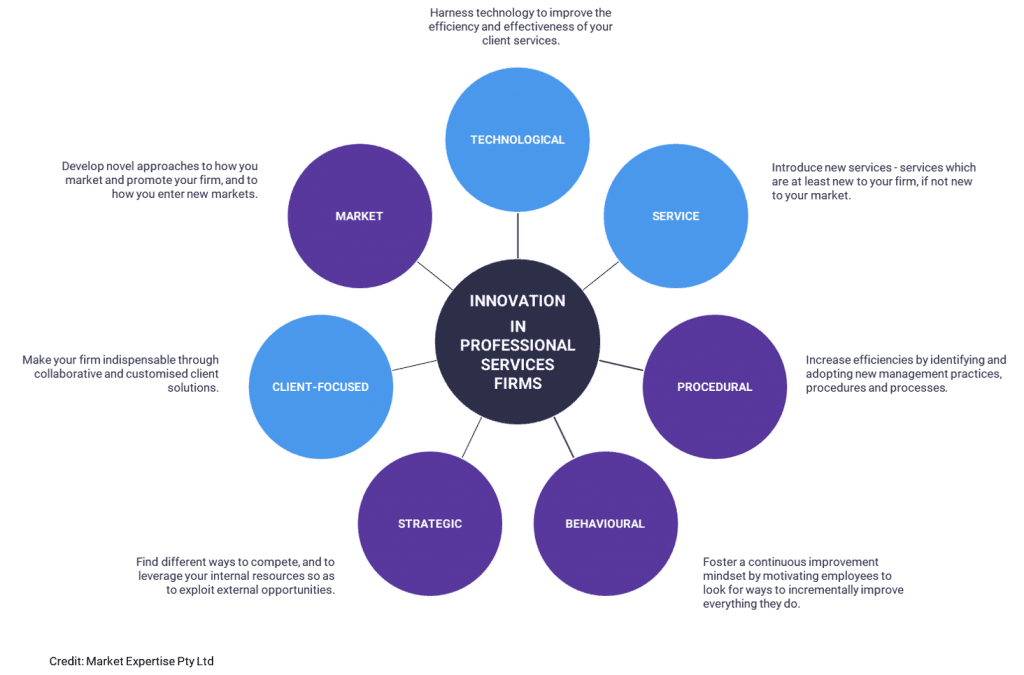The professional services sector has always been competitive. Still, it is difficult to point to a moment in history when external forces placed as intense a level of pressure on firms as they do today.
- The commoditisation of many service offerings
- The disruption to the ‘status quo’ by new global and tech-led entrants
- Wholesale consolidation as mergers and acquisitions run rampant
- Clients that are simultaneously exerting their buying power, demanding their service providers bear a greater proportion of risk, and raising the bar on minimum service standards.
- The seemingly strategic homogeneity of firms (they surely must be trying to be the same?)
- The struggle to attract and retain top talent – let’s be honest, in this market equity partners display about as much loyalty as casual workers
- And the increasing power and importance of procurement departments
With all these challenges, how do you protect and grow your clients? How do you pursue and win new business?
Innovation is widely considered to be the answer – or at least part of the solution.
Forget the ‘Big Bang’ theory
In a professional services environment, innovation is what can differentiate one firm from the rest, allow a firm to command a price premium, make one firm more profitable than the rest, strengthen client loyalty, and allow a firm to attain and maintain a competitive advantage.
Yet, many professional services firms struggle to understand what innovation is, or how it applies to them.
Most are under the misguided view that innovation must be disruptive. It rarely is.
In professional services environments, there are seven dimensions of innovation (see below diagram).

Each of these dimensions is either internally- or externally-focused.
- Internal innovation benefits the firm by improving the way it does business
- External innovation benefits the firm’s clients.
Unless your firm is mature – and, by that, I mean in its operations, not its heritage – it would be wise to concentrate on just two dimensions: behavioural innovation and process innovation.
Behavioural innovation is achieved when a firm creates a culture which embraces new ideas and encourages employees to seek out new and improved ways of performing even the most menial of tasks.
Critically, behavioural innovation permits failure.
Process innovation aids organisational efficiency through the adoption of non-technology-based new and best practice processes, procedures and techniques. It can be driven by quality, compliance and regulatory demands, as well as being a reaction to declining margins.
These two dimensions, though less sexy than others, are the key to continuous improvement. They will make your business more efficient, and your people more productive.






